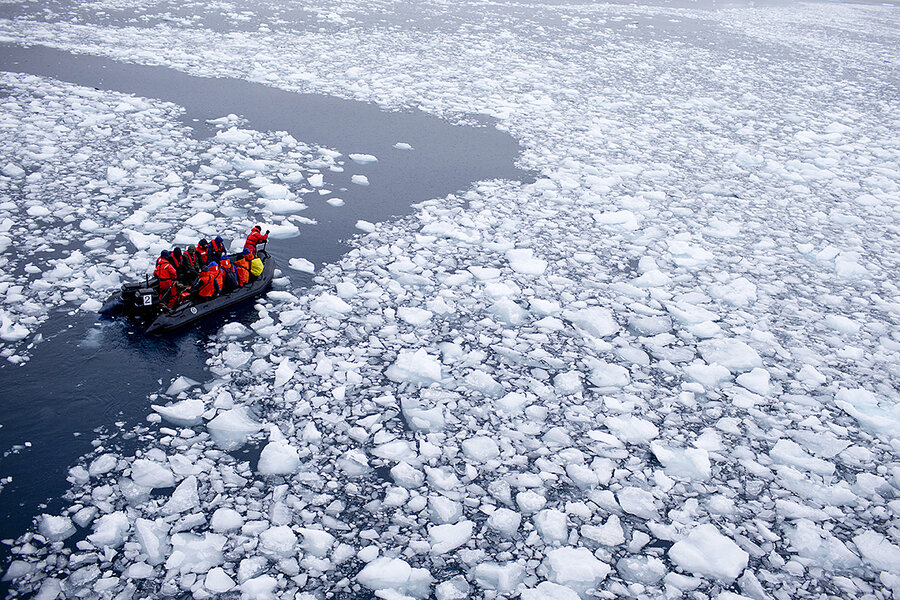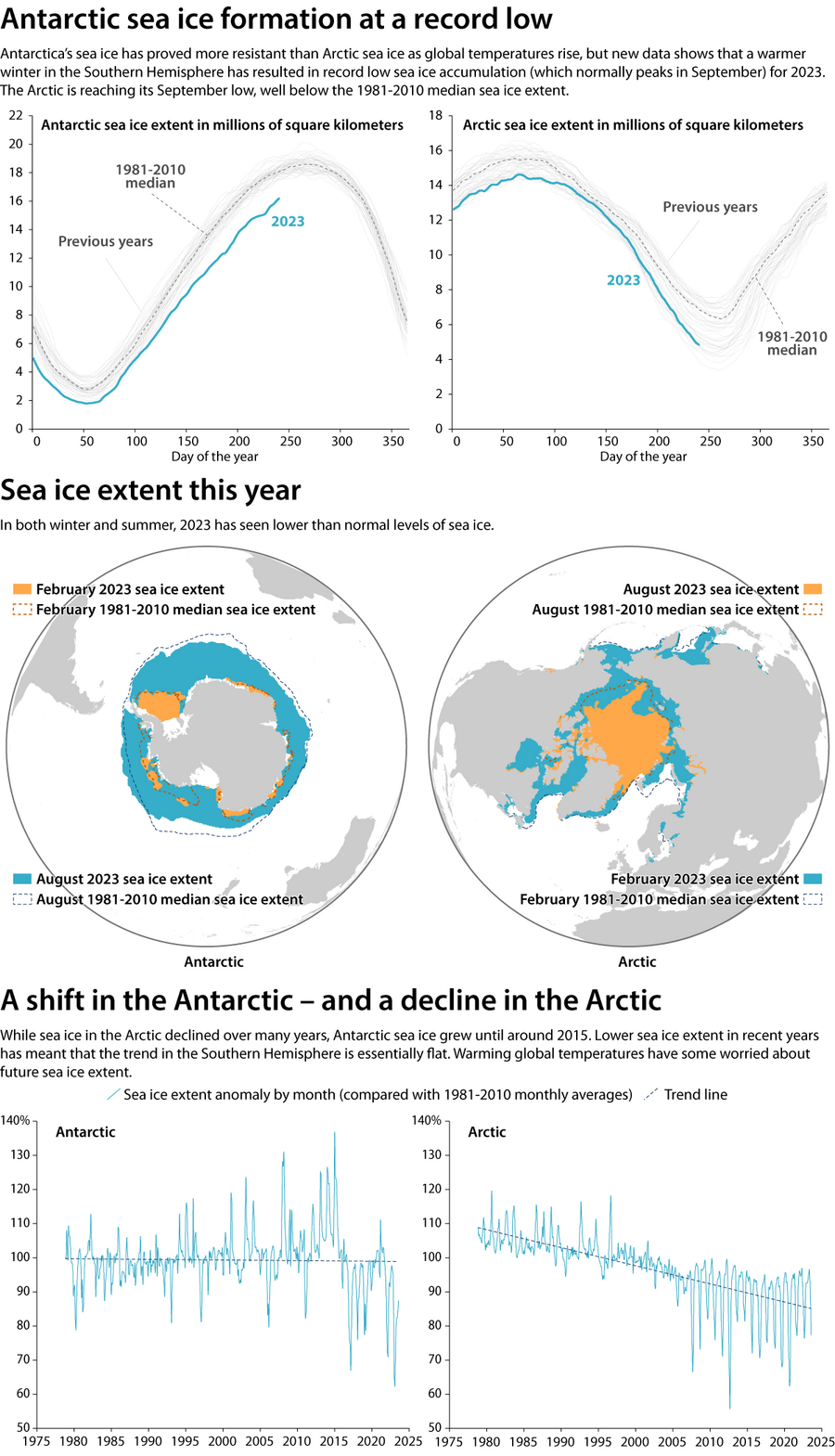Sea ice is shrinking. These maps show by how much
Loading...
It can be hard to visualize the magnitude of change underway on a warming planet. What does a hundred gigatons of ice look like? How many millions of Olympic swimming pools can you imagine?
Our charts with this article aim to contextualize the massive changes underway in the Antarctic, with data from the U.S. National Snow and Ice Data Center.
The headline: A warm southern winter has produced far less sea ice than normal, indicating a fundamental change may have taken place in this historically variable climate.
Why We Wrote This
Heat waves this summer from the United States to Europe and Asia have caught the world’s attention. But it’s also been unseasonably warm in the Antarctic winter – with visible effects.
By the end of August, Antarctic sea ice extent (the total region with at least 15% sea ice cover) was about 860,000 square miles smaller than the average August extent from 1981 to 2010. That’s a patch of ocean the size of Saudi Arabia, normally filled with ice but now open ocean, the lowest winter level since recording began 45 years ago.
And the overall trend of sea ice growth in Antarctica has reversed in the past few years, from growth to a slight decline.
Loss of sea ice in the Northern Hemisphere is also occurring and has long been emblematic of the climate crisis. Antarctic sea ice has appeared more resilient. As sea ice steadily declined in the Arctic, Antarctic sea ice has oscillated between record highs and lows over previous decades. But in 2016, sea ice in Antarctica began a steady downward trend.
Sea ice melt won’t directly raise sea levels – the ice is already floating in the ocean. But the loss of sea ice means less sunlight is reflected into space, accelerating warming seas and potentially threatening ice shelves that hold back the continent’s massive glaciers, some of which are melting perilously quickly. Scientists warn that if Antarctica’s Thwaites glacier collapses, global sea levels could rise up to 2 feet – a change that could then endanger other glaciers too.
The stakes are significant for polar ecosystems, not just global sea levels and ocean currents. One recently released study found a dramatic decline in survival rates of young emperor penguins, an iconic bird as the largest of penguin species. If ice melts or breaks up too early, penguin chicks can die because they haven’t developed their adult waterproof feathers.
Scientists have also been tracking some unusual breaking of ice shelves, which are formed by glaciers and are much thicker than the thin and variable sea ice.
“It’s still an unknown place,” Catherine Walker of the Woods Hole Oceanographic Institution told the Monitor, after the surprise collapse of the Conger ice shelf last year.









